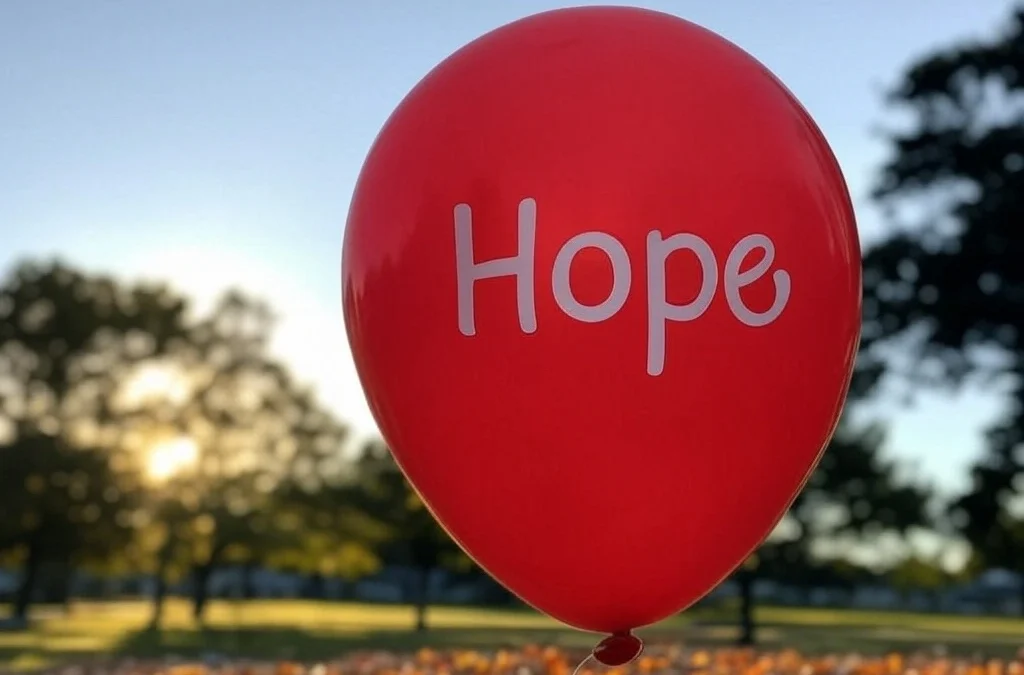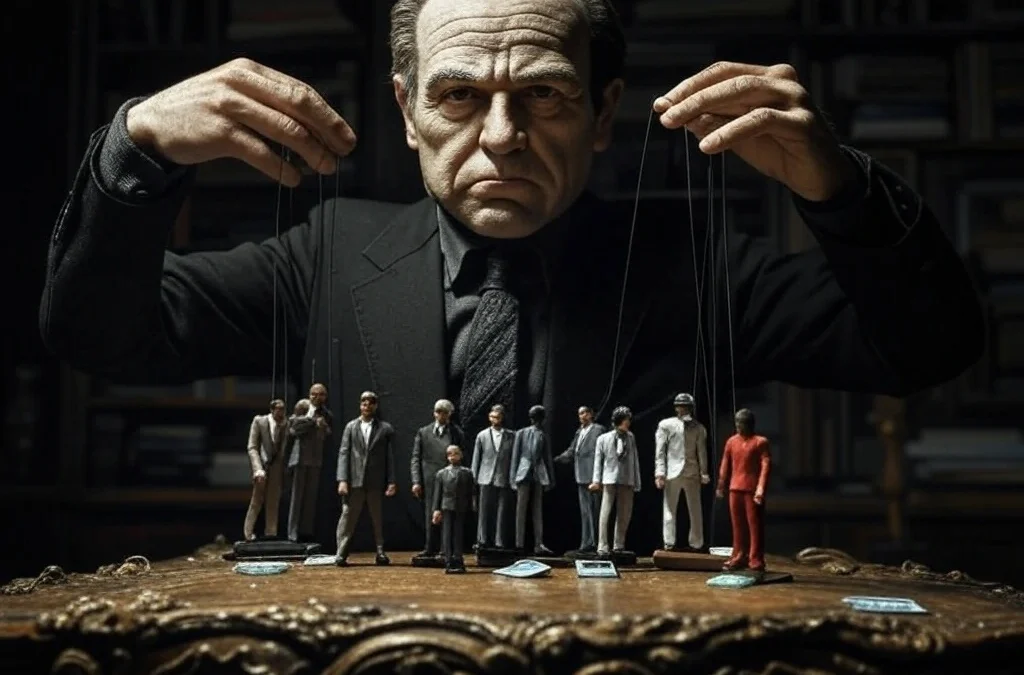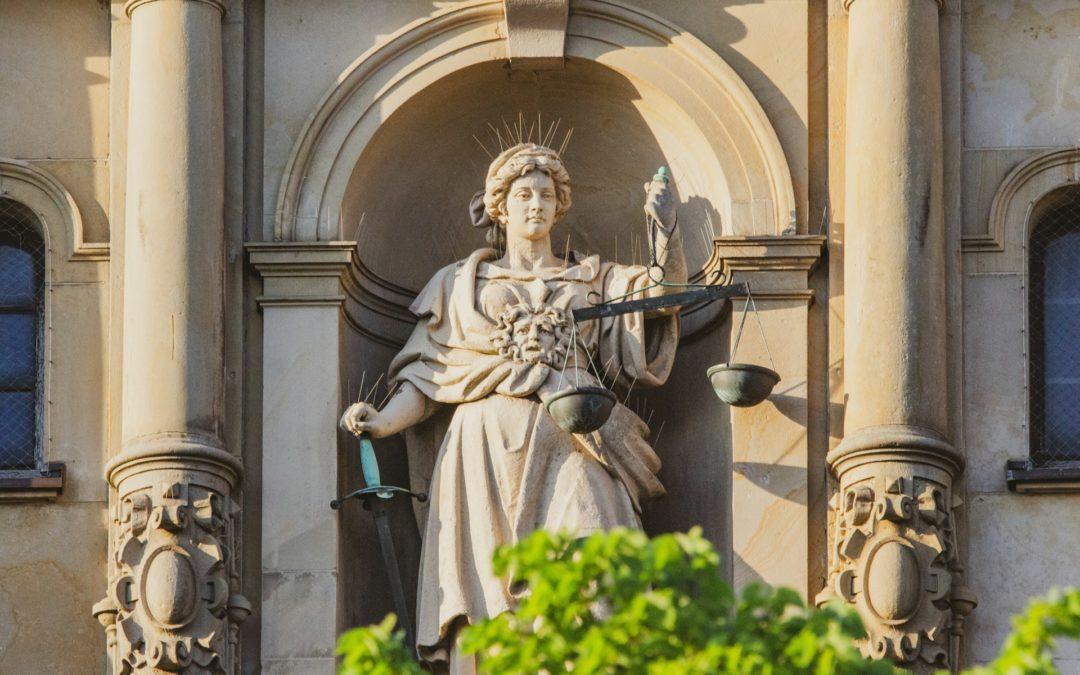Moral ambiguity, a concept often encountered in literature, film, and real-life scenarios, presents situations where the distinction between right and wrong is not clear-cut. These instances challenge our ethical compass and provoke thoughtful contemplation about the nature of morality itself. This article delves into the top 20 moral ambiguity examples, showcasing scenarios where ethical decisions are not black and white, but rather exist in a grey area. These examples serve as insightful illustrations of the complexities and nuances inherent in moral judgment.
Understanding moral ambiguity is crucial in a world where decisions and actions are frequently judged through a polarized lens of right or wrong. In this context, the examples we explore offer a broad spectrum of situations – from historical events to fictional narratives – that demonstrate the intricate balance and conflict between differing moral values. They highlight the importance of context, perspective, and the multifaceted nature of ethical decision-making, providing a deeper insight into the challenges of defining morality in a diverse and complex world.
What is Moral Ambiguity?
Moral ambiguity refers to situations where the ethical or moral implications are unclear, often causing confusion or disagreement about what is right or wrong. This term typically arises in scenarios where traditional moral guidelines do not offer clear-cut answers, or where there are competing moral perspectives, making it challenging to discern a straightforward moral stance. In such contexts, actions or decisions do not fit neatly into conventional categories of good or evil, right or wrong, often leading to complex ethical debates and dilemmas. Moral ambiguity is a key concept in various fields, including philosophy, literature, and psychology, and plays a significant role in discussions about ethics, character motivation, and the complexity of human behavior.
Moral ambiguity often arises in real-world situations where individuals or groups must make decisions with potentially significant consequences, yet the ethical implications of these decisions are not clear-cut. This ambiguity can stem from various factors, such as cultural differences, personal values, conflicting interests, or the complexity of the situation itself.
In literature and media, moral ambiguity is a common theme used to explore the multifaceted nature of characters and their decisions, highlighting the often complex and nuanced nature of morality. Characters who exhibit moral ambiguity are not easily classified as purely heroic or villainous but display a mix of qualities and motivations that reflect the complexities of real human behavior.
In philosophical discourse, moral ambiguity challenges the idea of absolute moral truths, prompting debates over moral relativism versus moral absolutism. Moral relativism suggests that what is considered morally right or wrong depends on cultural, societal, or individual perspectives, while moral absolutism holds that certain moral principles are universally true and unchanging.
In psychology, moral ambiguity is examined in the context of moral development, decision-making, and cognitive processes. It considers how individuals perceive, rationalize, and respond to morally ambiguous situations, often revealing insights into human nature, ethical reasoning, and the influence of societal norms and personal experiences on moral judgment.
Overall, moral ambiguity is a critical concept in understanding the complexity of moral and ethical decision-making. It underscores the importance of context, perspective, and human nature in shaping our understanding of right and wrong.
The Best Examples of Moral Ambiguity
1. The Trolley Problem – In this moral dilemma, the situation forces an individual to make a tough choice about the value of one life versus many. The moral ambiguity lies in the decision to actively cause harm to one person by diverting the trolley, with the intention of saving five others. This scenario highlights the conflict between the ethical principles of minimizing harm (utilitarianism) and avoiding direct harm to an individual (deontology), making it a classic example in moral philosophy classes.
2. Utilitarianism vs. Deontology – This ongoing philosophical debate delves into the foundations of ethical decision-making. Utilitarianism argues that the morality of an action is determined by its overall consequences, aiming to maximize happiness or well-being. On the other hand, deontology asserts that certain actions are inherently right or wrong, regardless of their outcomes. Moral ambiguity arises in situations where the two principles may lead to conflicting conclusions, requiring individuals to weigh the consequences against moral rules.
3. Capital Punishment – The morality of the death penalty sparks debates about the state’s authority to take a life as punishment for a crime. Questions about the potential for wrongful convictions and the ethical implications of state-sanctioned killing contribute to the moral ambiguity surrounding capital punishment. It forces a consideration of the balance between justice, retribution, and the possibility of irreversible error.
4. Euthanasia – The debate on assisted suicide and euthanasia centers on the principles of individual autonomy, the relief of suffering, and the sanctity of life. The moral ambiguity arises from the clash between the right to make decisions about one’s own life and the potential ethical concerns related to intentionally ending a life. The complex interplay of compassion, autonomy, and the value of life adds layers to this ethical dilemma.
5. Corporate Ethics – Business decisions involving cost-cutting measures leading to employee layoffs present a moral quandary. The responsibility of corporations to their employees, stakeholders, and the broader community is questioned. This scenario raises ethical considerations about the pursuit of profit versus the well-being of individuals and communities affected by corporate actions.
6. Environmental Dilemmas – Balancing economic development with environmental conservation introduces moral ambiguity. Governments and societies grapple with decisions on whether to prioritize economic growth at the expense of ecological preservation. The ethical tension lies in the trade-off between immediate economic benefits and the long-term sustainability of the planet, impacting current and future generations.
7. Privacy vs. National Security – The tension between safeguarding individual privacy and ensuring national security creates moral ambiguity in decisions related to surveillance and data collection. Striking the right balance between protecting citizens and respecting their privacy rights is a complex ethical challenge, with implications for democratic values and the trust between governments and their citizens.
8. Whistleblowing – Individuals facing unethical practices within organizations confront a moral dilemma. The tension arises between loyalty to one’s employer and the duty to expose wrongdoing in the interest of the greater good. Whistleblowing raises questions about individual responsibility, corporate transparency, and the potential personal and professional consequences of revealing information that may be against the interests of the organization.
9. Criminal Profiling – The use of profiling in law enforcement raises ethical questions about the potential for discrimination based on race, ethnicity, or other characteristics. The moral ambiguity stems from the tension between the pursuit of effective crime prevention and the risk of perpetuating biases and injustices. Striking a balance between public safety and individual rights becomes a complex challenge in this context.
10. Animal Testing – Balancing the need for scientific advancement with the ethical treatment of animals in research creates a moral gray area. The dilemma lies in the pursuit of knowledge for the betterment of human health and society, contrasted with concerns about the well-being and ethical treatment of animals. The challenge is to find a balance that respects both scientific progress and the moral obligation to minimize harm to sentient beings.
11. Cultural Relativism – Cultural relativism raises the question of whether cultural practices should be judged by universal moral standards or within the context of their own culture. This introduces moral ambiguity as it challenges the idea of a single, universally applicable set of ethical principles. The dilemma lies in respecting cultural diversity while addressing practices that may conflict with fundamental human rights or ethical norms.
12. Genetic Engineering – The moral implications of manipulating genes for medical purposes or human enhancement involve considerations of playing “the role of a creator.” This ethical dilemma encompasses questions about the potential consequences of altering the fundamental building blocks of life, including issues of consent, unintended consequences, and the societal impact of enhanced capabilities.
13. AI and Autonomy – As artificial intelligence advances, questions arise about the ethical treatment of intelligent machines and the potential consequences of autonomous decision-making. The moral ambiguity lies in defining the rights and responsibilities associated with AI, including considerations of accountability, transparency, and the impact on human autonomy as machines make increasingly complex decisions.
14. Military Intervention – Deciding whether to intervene in conflicts for humanitarian reasons involves weighing the moral imperative to protect lives against the sovereignty of nations. The ethical dilemma centers on the tension between the responsibility to prevent or stop atrocities and the respect for a nation’s right to self-determination, highlighting the complexities of international relations and humanitarian interventions.
15. Surrogacy – The practice of surrogacy raises questions about the commodification of reproductive capabilities and the well-being of the surrogate and the child. The ethical considerations revolve around issues of autonomy, exploitation, and the potential emotional and physical toll on surrogate mothers, as well as the rights and welfare of the children born through surrogacy.
16. Cultural Appropriation – Cultural appropriation involves the borrowing or imitation of elements from one culture by members of another culture. This raises questions about respect, identity, and power dynamics. The moral ambiguity lies in navigating the fine line between appreciation and exploitation, considering the impact on marginalized communities and the preservation of cultural heritage.
17. Medical Experimentation – The history of unethical medical experiments, such as the Tuskegee Syphilis Study, highlights the moral complexities of scientific research. The dilemma involves balancing the pursuit of medical knowledge with the ethical treatment of human subjects, emphasizing the importance of informed consent, transparency, and the prevention of harm in medical research.
18. Lying for a Greater Good – The ethical dilemma of whether lying is justified if it serves a greater good is a classic moral ambiguity. This scenario raises questions about the consequences of deception, the trustworthiness of individuals and institutions, and the potential erosion of moral principles in the pursuit of noble ends.
19. The Just War Theory – Determining the conditions under which war is morally justifiable introduces ambiguity, as the line between self-defense and aggression can be blurred. The ethical considerations revolve around the principles of proportionality, just cause, and the protection of non-combatants, emphasizing the challenges of applying moral principles in the complex and often unpredictable context of armed conflicts.
20. Government Surveillance – Balancing the need for public safety with individual privacy rights raises moral questions about the extent to which governments should monitor their citizens. This ethical dilemma involves considerations of security, personal freedom, and the potential abuse of power, highlighting the delicate balance between protecting the common good and preserving individual rights in the digital age.
Why We Need to Know What Is Moral Ambiguity
Understanding and grappling with moral ambiguity is crucial for several reasons, as it enriches our ethical thinking, decision-making processes, and overall approach to complex issues. Here are some reasons why it is important to know what moral ambiguity is.
Realistic Representation of Moral Dilemmas: In the real world, ethical situations are often complex and multifaceted. Recognizing and understanding moral ambiguity allows us to acknowledge and engage with the real-life complexity of moral dilemmas, rather than relying on oversimplified, black-and-white perspectives.
Critical Thinking and Reflection: Dealing with moral ambiguity encourages critical thinking and reflective analysis. Individuals need to carefully consider various perspectives, values, and potential consequences, fostering a more nuanced and sophisticated approach to ethical decision-making.
Ethical Decision-Making: Many real-world decisions involve conflicting values, interests, or principles. Understanding moral ambiguity helps individuals navigate these situations by encouraging a thoughtful consideration of the ethical implications and potential trade-offs, leading to more informed and responsible decision-making.
Cultural Sensitivity: Moral ambiguity is often tied to cultural, social, and contextual differences. Being aware of moral ambiguity promotes cultural sensitivity, encouraging individuals to appreciate diverse perspectives and understand that what may be considered ethically acceptable in one context might not be in another.
Ethical Leadership: Leaders, whether in business, politics, or other fields, frequently face morally ambiguous situations. Developing an awareness of moral ambiguity is crucial for ethical leadership, as it enables leaders to navigate complexities, make informed decisions, and lead with a deeper understanding of the ethical implications of their choices.
Personal Growth and Moral Development: grappling with moral ambiguity is a fundamental aspect of personal growth and moral development. It challenges individuals to question their own assumptions, values, and beliefs, fostering a more nuanced and mature moral outlook over time.
Promoting Dialogue and Debate: Moral ambiguity often sparks meaningful dialogue and debate. By acknowledging that ethical issues are not always clear-cut, individuals are prompted to engage in discussions that explore different perspectives, encouraging a richer understanding of the ethical dimensions of a given situation.
Literary and Artistic Exploration: Many works of literature, film, and art deliberately explore moral ambiguity to provoke thought and engage audiences on a deeper level. Understanding moral ambiguity enhances our appreciation of such works and allows us to engage with the nuanced ethical dilemmas they present.
Moral Ambiguity in History and Literature
The term “moral ambiguity” is not attributed to a specific individual or a single point in history. Instead, it has evolved organically within discussions of ethics, philosophy, and literature. The concept of moral ambiguity reflects an acknowledgment of the complexity inherent in ethical decision-making and the recognition that moral situations often defy easy categorization into clear-cut right or wrong.
Prominent figures in philosophy and literature have contributed to the exploration of moral ambiguity through their works and ideas. While they may not have coined the term directly, their influence has been significant in shaping discussions around the nuanced nature of morality. Here are a few figures who have played a role in this context:
- Fyodor Dostoevsky: The Russian novelist Fyodor Dostoevsky, particularly in works like “Crime and Punishment” and “The Brothers Karamazov,” delves into the psychological and moral complexities of human behavior. His exploration of characters facing moral dilemmas and the consequences of their actions contributes to the understanding of moral ambiguity in literature.
- Jean-Paul Sartre: The existentialist philosopher Jean-Paul Sartre addressed the idea of radical freedom and the responsibility that comes with it. His works, such as “Being and Nothingness,” emphasize the individual’s capacity to make choices in ambiguous situations, where there is no predefined moral code.
- Albert Camus: Camus, an existentialist philosopher and author, is known for his exploration of the absurdity of the human condition. In works like “The Stranger” and “The Plague,” he presents characters who grapple with the meaning of life and the moral ambiguity inherent in the face of absurdity.
- Joseph Conrad: In novels like “Heart of Darkness,” Conrad explores the moral ambiguities of colonialism and the human capacity for both good and evil. His narrative style often leaves readers questioning the true nature of the characters and their actions.
- Philippa Foot: The philosopher Philippa Foot made significant contributions to moral philosophy, particularly in the development of virtue ethics. Her work has influenced discussions on moral character and the complexities involved in ethical decision-making.
- Joseph Fletcher: As a proponent of situational ethics, Joseph Fletcher emphasized the importance of considering the context of a situation when making moral judgments. His ideas contribute to the understanding that moral decisions often involve nuanced considerations.
The Most Popular on BitGlint

40 Social Dilemma Examples in the World & Real Life
Social dilemmas are everywhere. They shape the choices we make at work, in our communities, and even on a global...

30 Favor Examples & Definition
Doing a favor means helping someone without expecting anything in return. It’s an act of kindness that can strengthen...

30 Naivety Examples & Definition
Naivety is something most people experience at some point in their lives. It often starts in childhood, but for some,...

20 Chronology Examples & Meaning
Chronology is something we use more than we realize. It shows up in conversations, in how we remember the past, and in...

30 Wishful Thinking Examples & Meaning
Wishful thinking is something we all do at some point. You hope things will turn out fine—even if there’s no real...

20 Examples of Gravity & What Gravity Really Is
Gravity is one of the most important forces in the universe, but many people don’t fully understand what it really is...

20 Examples of Secondary Consumers in the Food Chain
Secondary consumers are animals that eat other animals—usually herbivores that feed on plants. They’re an important...
Get Inspired with BitGlint
The Latest
30 Flow State Examples & Definition
Most people have felt it at some point — that rare moment when everything just clicks. You're working, moving, or thinking, and suddenly it's like the rest of the world fades out. You're focused, clear, and everything you're doing feels smooth and natural. That’s...

30 Cynicism Examples in Everyday Life & Definition
Cynicism is something most people have seen, heard, or even felt - but few stop to really think about what it means. It shows up in jokes, in conversations, and in quiet thoughts we don’t always say out loud. Some people wear it like armor. Others see it as honesty....
50 Examples of Square Things
Square things are part of everyday life, even if we don’t always think about them. From objects we use at home to tools, packaging, and design elements we see out in the world, the square shape is everywhere. It’s simple, balanced, and practical — which is exactly why...
20 Hinduism Examples: Symbols, Gods & Core Beliefs
Hinduism is practiced by over a billion of people every day - but for those unfamiliar with it, it can seem complex or even confusing. With its many gods, rituals, and traditions, it raises a lot of questions. What do Hindus actually believe? What are the main...

